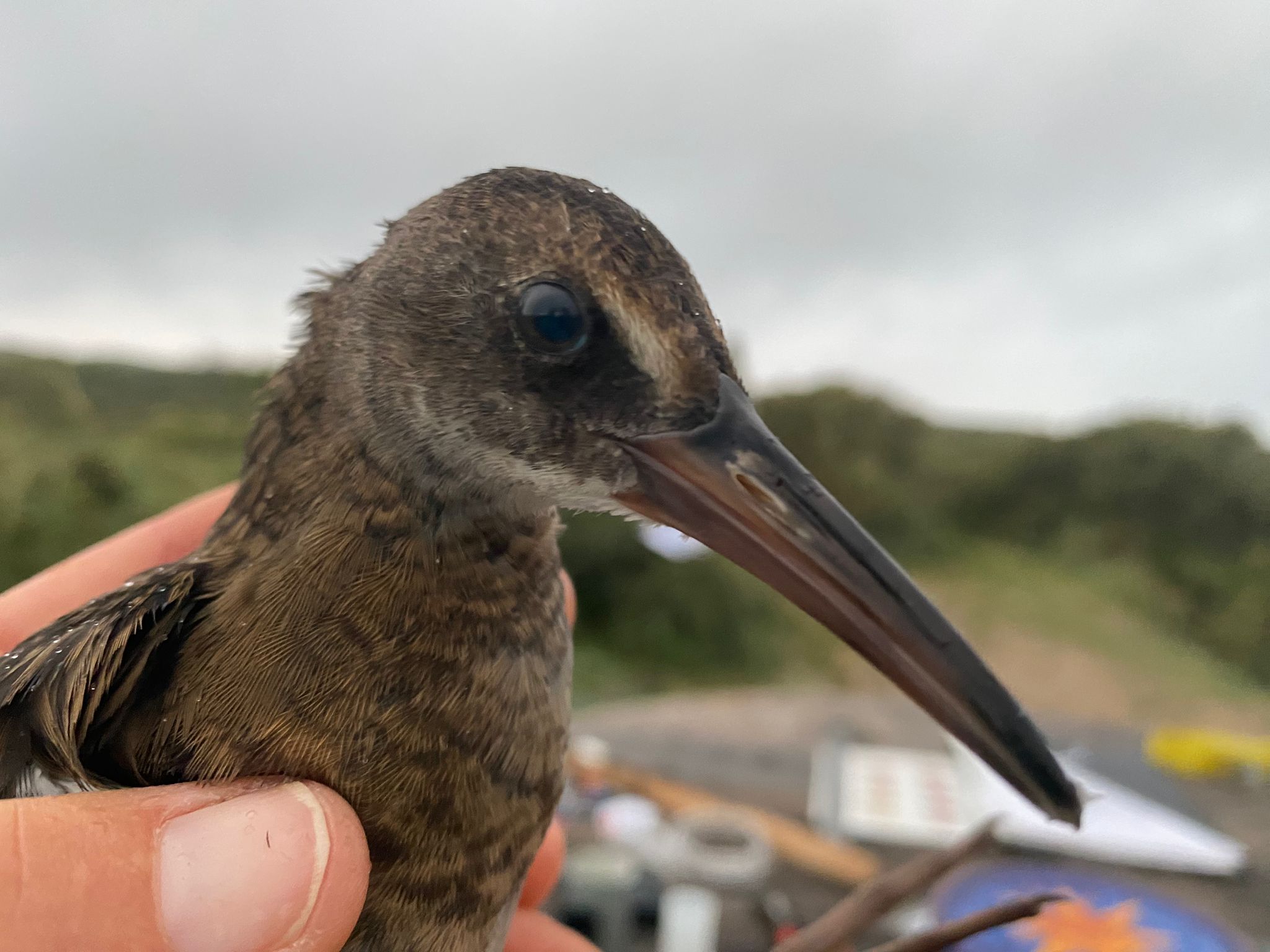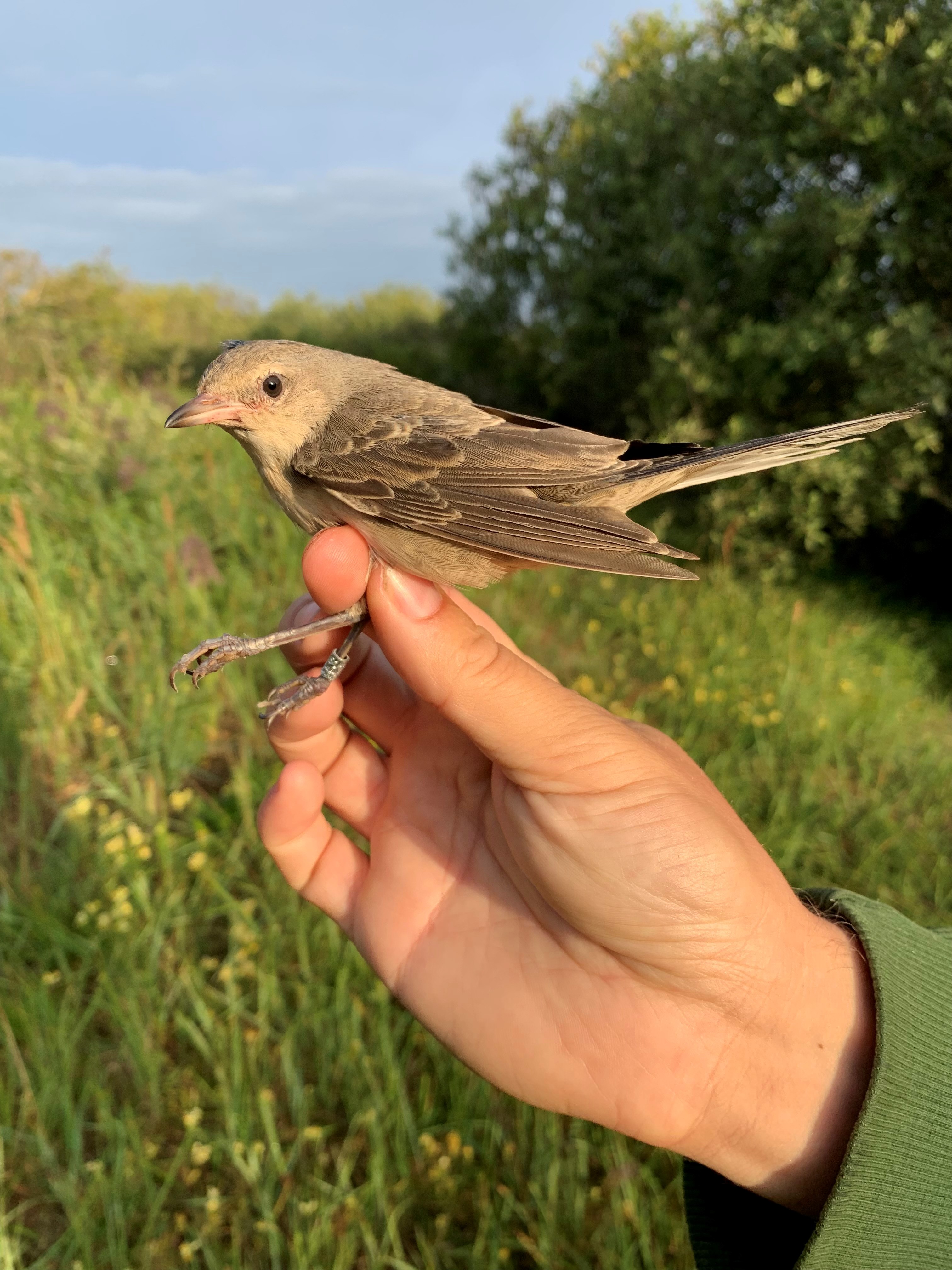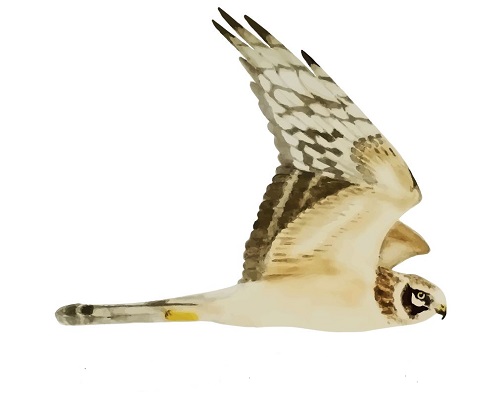Her på Skagen Fuglestations blog bringes korte nyheder i dagbogsformat om hændelser på fuglestationen.
Water rail day
This morning, I went out with Bjørn to open the nets at Kabeltromlen. We were soon joined by Simon the first, who stayed for less than 3 hours, but enough time to get some really good birds:
In the first net check – yet again! – we had a juvenile water rail (vandrikse). It was the third we ringed in the last 10 days, all caught in the same row of nets, all of them juveniles, so we assume they are brothers and sisters from one family of Water rail, that lives north of the trail. There must be another family south of the trail, because we always hear them. It is amazing, that there are so many of them, and what a great treat to get to ring them all, so we also know, it is not always the same bird that comes to us. Rails are normally very hard to see, and therefore almost impossible to count otherwise, which is also why we only have very rough estimates of how many water – and other – rails there are – in Denmark, or in Europe, or worldwide, really. This is where catching and marking birds is a very big advantage, because suddenly we see, that the birds we keep hearing actually seemed to have a good breeding success. Mind you, of course, we don’t catch all the birds around, so not having caught many in other years does not necessarily mean they had low breeding success. It might be just that this year they like to hang out around our nets for whichever reason.
In brackets: after Simon left, we caught yet another juvenile water rail, making it four total in the last 10 days!

Picture of one of the water rails (vandrikse).
Before he left, however, we also caught quite a treat: a barred warbler (høgesanger). This is yet another bird that is very rarely seen, however, it is also not often heard in Denmark, simply because there aren’t many. In fact, it has not been known to breed in Denmark for the last few decades, only this year they reported one single breeding pair again. Whether or not there are more and they are just not known, we cannot really guess. Fact is, barred warblers are not common in Denmark, however, another fact is, they are not easy to observe.
Therefore, it was not so surprising that several birders who were in the close surroundings when Simon made the Zello call, came to watch the ringing and get a picture of this rather special bird.

Picture of the barred warbler (høgesanger).
Not much later, the zitting cisticola (cistussanger) that has been hanging around for a while now, was heard again. This lead to an even higher influx of people with big scopes and big cameras.
Simon the first then left to do some errands, while Bjørn and I just continued our normal work. As was to be expected: In the net check after Simon left we had a rather large number of birds, so we called Simon the second to help, because he was sitting at World’s End 1 with Rolf, doing the migration count, which, again, did not produce all too many birds, so he was probably quite happy to be allowed to leave early, and get to see our 4th water rail instead.
Finally at around noon we closed down the nets after a medium successful ringing day. We had quite a few birds – more than the last few times, however, they were still mostly not what you would call “migration”. Interestingly, the last few times we almost caught no whitethroats (tornsanger), whereas today they showed up again. I do not have an explanation for that, other than the fact that some of them were caught on the south side, which we did not always have open, because I was the only licensed ringer for some days. However, even on the north side we suddenly had tornsangers again. Maybe they were hiding somewhere else during the storm and are now back. Hopefully to eat the loads of berries that are out there and prepare for a good migration, so that many of them can return and have babies next year!
Migration was there, however, in a marsh warbler (kærsanger), a willow warbler (løvsanger) and a garden warbler (havesanger). And also the barred warbler, of course. The problem with the migration thing seems to be the weather. The storm is now over, but the winds are still from the south. Also, even though we haven’t had rain here in the last few days, it has been raining a lot over the sea and in the south of Sweden and Norway, and especially during the early hours of the night when birds would start their migration. At the end of next week it looks like the winds will change and migration will probably pick up speed. However, if migration conditions are very good, birds might just pass us by completely and not stop here but go through further south if they can. We will patiently (or not so much) wait and see.
In the afternoon, we had a cleaning day and a last dinner with the guest from the apartment, who are leaving tomorrow. We hope they will come back next year!
Ringing (Kabeltromlekrattet)
Vandrikse (Water Rail) - 2
Munk (Blackcap) - 2
Tornsanger (Common Whitethroat) - 5
Gærdesanger (Lesser Whitethroat) – 1
Havesanger (Garden Warbler) - 1
Høgesanger (Barred Warbler) - 1
Rørsanger (Reed Warbler) - 3
Kæersanger (Marsh Warbler) - 1
Løvsanger (Willow Warbler) - 1
Gransanger (Chiffchaff) - 4
Rørspruv (Reed Bunting) - 4
Gulspurv (Yellowhammer) - 1
Total: 26
People: Martina Hillbrand, Simon Kiesé, Bjørn Laursen, Simon S. Christiansen, Lisa Vergin, Karen and Henrik Toft
A link to today's observations from volunteers and local observers.



